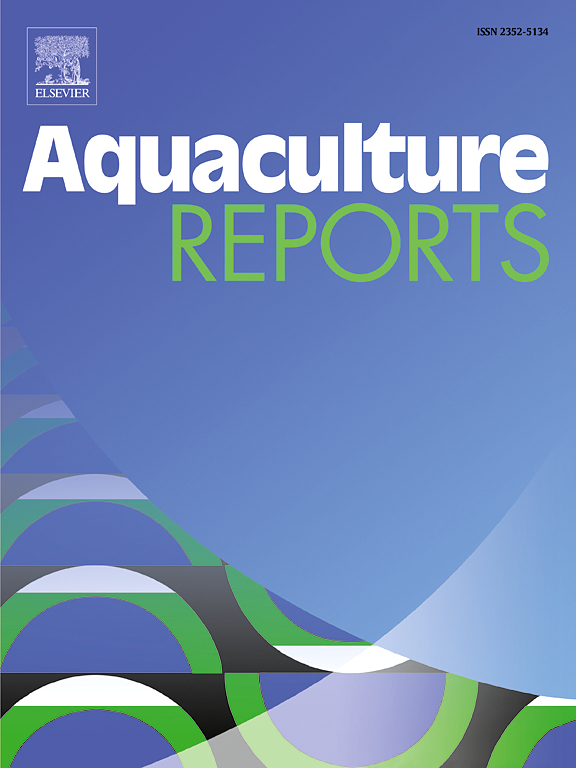Detection of favorable QTL alleles and candidate genes for high pH tolerance in Chinese shrimp Fenneropenaeus chinensis via association and linkage maps
IF 3.2
2区 农林科学
Q1 FISHERIES
引用次数: 0
Abstract
High pH is a significant form of abiotic stress in Fenneropenaeus chinensis, affecting multiple cellular structures and metabolic pathways. Utilizing a combination of genome-wide association study (GWAS), quantitative trait locus analysis (QTL), and selective sweep analysis, we pinpointed 19 QTLs that contribute to high pH tolerance of F. chinensis. By integrating with transcriptome data and functional annotations, we further verified four candidate genes: TCPG, TMEM9, PSA7, and ZNF773. Notably, we also detected a candidate gene, Octbeta1R, in a highly differentiated regions on Chr34 ( = 0.086). This region exhibited significant genetic divergence between the high pH sensitive and tolerant groups, overlapping with three major QTLs. The expression levels of these candidate genes differed significantly between the two groups, further supporting their involvement in pH tolerance. In addition, a GWAS was conducted using 631,266 high-quality single nucleotide polymorphisms (SNPs). The analysis identified 136 loci that were significantly associated with the high pH tolerance. Five candidate genes, namely HMCN1, NUDFAF7, SCARB1, NUBP2, and NAT10 were annotated based on their expression patterns and association with selective sweep regions. Haploblock analysis of ANKL2 gene revealed three functional mutations and significant differences in survival time after high pH stress were observed between haplotypes. The findings provide valuable insights into the genetic mechanisms underlying high pH tolerance in Chinese shrimp. These discoveries pave the way for the development of breeding strategies that can enhance the resilience of this important aquaculture species against environmental stressors such as high pH levels. The identification of candidate genes and QTLs also offers potential targets for molecular genetic investigations and breeding efforts aimed at improving the adaptability of F. chinensis to changing environmental conditions.
求助全文
约1分钟内获得全文
求助全文
来源期刊

Aquaculture Reports
Agricultural and Biological Sciences-Animal Science and Zoology
CiteScore
5.90
自引率
8.10%
发文量
469
审稿时长
77 days
期刊介绍:
Aquaculture Reports will publish original research papers and reviews documenting outstanding science with a regional context and focus, answering the need for high quality information on novel species, systems and regions in emerging areas of aquaculture research and development, such as integrated multi-trophic aquaculture, urban aquaculture, ornamental, unfed aquaculture, offshore aquaculture and others. Papers having industry research as priority and encompassing product development research or current industry practice are encouraged.
 求助内容:
求助内容: 应助结果提醒方式:
应助结果提醒方式:


